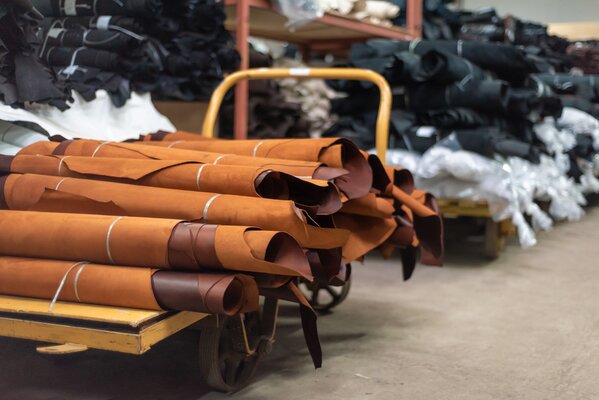8 July 2025
Leather making is an ancient art that has been around for more than 7,000 years. But the way it is made has changed a lot since those days, with the most high-tech methods used across the industry. From selecting and preparing the hide to pre-tanning processes and creating the final product with the help of tanning, Leather Naturally has produced an easy to understand guide that sets out every stage.

Selecting and preparing the hide
The journey begins with the careful selection of cow hides, which have natural strength and unique grain. These hides undergo initial cleaning during a pre-tanning stage that prepares the hide by preserving the collagen fibres that are essential to leather’s durability and flexibility. Modern facilities employ automated systems that ensure consistency across each hide.
Advanced pre-tanning processes
Following the initial cleaning, the hides are softened and conditioned through a series of treatments. This phase, often called the beamhouse process, involves soaking and liming to open up the fibrous structure of a hide. Enzymatic treatments can then be applied to further loosen unwanted proteins while preserving the core structure. These steps not only enhance the hide’s workability but also set the stage for more uniform and effective tanning later on.
The science of tanning
Tanning is the transformative part of leather production. Modern processes utilise a blend of traditional techniques and innovative chemical engineering. Chrome tanning involves immersing the hides in solutions containing chromium salts to stabilise the collagen, resulting in leather that is supple, water-resistant, and highly durable. Vegetable tanning is a slower process that uses natural tannins that are extracted from tree bark and other plant sources to impart a rich, organic character to the leather. Throughout the tanning process, rigorous quality control measures monitor pH levels, moisture content and chemical uptake, ensuring that every hide meets the strictest standards. Modern control systems also ensure precise chemical dosing, which maximises quality while minimising waste.
Shaping the final product
Once tanning is complete, the leather enters the finishing stage—a series of processes that further refine its appearance and performance. The hide is split and shaved to achieve the desired thickness and surface consistency. Dyeing, an art in itself, adds both colour and depth, while finishing treatments such as embossing, coating and waterproofing provide additional resilience and tactile appeal. Each step is carefully calibrated, often utilising advanced machinery that allows for precise adjustments in texture and gloss.
Improving industry standards
Today’s leather industry is acutely aware of its environmental footprint, and Leather Working Group sets Standards against which leather manufacturers can be assessed and certified to recognise good practices and undertake improvements.
Art, science and sustainability
Modern bovine leather processing is a balanced blend of tradition and technology. What began as a means to transform a by-product into a practical commodity now stands as a testament to innovative engineering that results in a tactile and versatile end prooduct. Every piece of leather tells a story of modern science at work—where raw natural materials are given a new lease of life through precision processing, innovative chemicals and a commitment to environmental responsibility. In this blend of art and science, the beauty of leather is redefined for the contemporary world, offering a luxurious, sustainable material that honours its heritage and its sustainable future.
